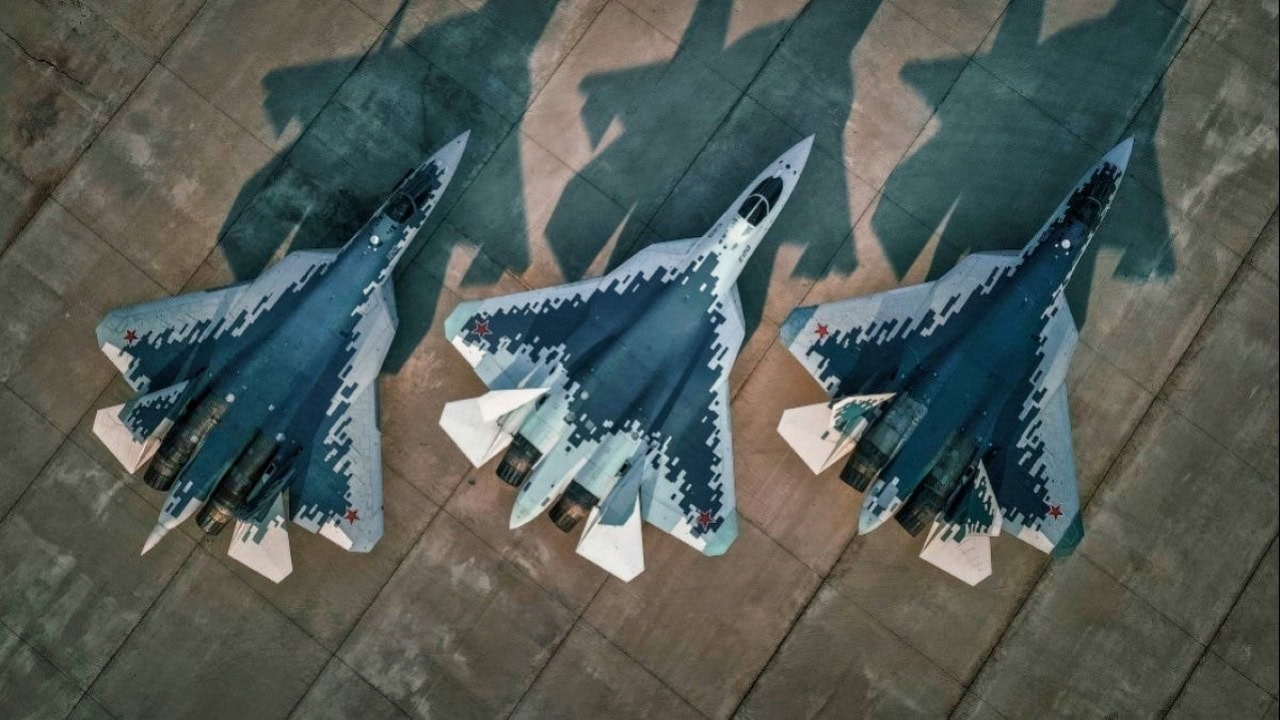Article Summary: Russia is claiming its Su-57 Felon stealth fighter has landed its first foreign buyer, but details remain unclear. Could Moscow be attempting to create an F-35-style global fighter network? With reports of Algeria confirming a purchase and speculation around India and North Korea, questions arise about Russia’s ability to mass-produce the aircraft.
Key Point #1 – Compared to the U.S. F-35, which boasts hundreds of operational units worldwide, the Su-57 remains largely untested with fewer than 15 currently in service.
Key Point #2 – Without proven networking capabilities or scalable production, it’s unlikely Russia can match the success of Lockheed Martin’s fighter anytime soon.
Who’s Buying Russia’s Su-57 Felon? A Closer Look at Its First Export Deal
Russia claims to have sold its Su-57 Felon to a foreign buyer. However, the customer country was not initially revealed, generating a situation where some might be inclined to wonder if Russia ultimately has the vision to create an F-35-like international network of Su-57s.
Rosoboronexport chief Alexander Mikheev made the announcement during the Aero India 2025 defense exhibition, where Russia showcased the Su-57 to international audiences.
Who might these countries be? North Korea? Reuters reported that Russia is offering the Su-57 to India. Since the announcement, an essay from Defence Blog states that Algeria has confirmed its purchase of the Su-57. This seems significant as it would place the Russian 5th-gen aircraft along the border of the Mediterranean Sea in the range of Southern Europe.
Su-57 Production Problems
Russia is a long way from even beginning any comparable effort, such as the proliferation of the United States F-35, for several key reasons, the first of which is simple production reality. If Russia does have an international customer, its industrial base seems ill-suited to support any significant production effort.
Should there be interest among many foreign countries in acquiring the Su-57, which is by no means assured, it seems unlikely Russia would have the infrastructure and ability to scale production.
This is particularly true because Russia itself has encountered difficulties building its own Su-57s and, at the moment, only has a small number of the aircraft. Therefore, in terms of pure “mass” or ability to produce Su-57s, it seems Russia is light years away from building any Su-57 network.
International Demand for Su-57 Felon?
Secondly, it is not clear that there is a large-scale international demand for the aircraft, as it remains largely untested. The F-35 is now in as many as 18 countries, and hundreds of Joint Strike Fighters already exist.
Senior Lockheed executives managing international demand explain that, due to the fast-growing number of F-35 countries, there will be more than 500 F-35s throughout the European continent by 2030.
The fleet size dynamic with the Su-57 is quite different: multiple public reports say there are currently somewhere between four and 15 operational Felon aircraft, and Russia’s TASS news agency has reported plans for the country to acquire 76 Su-57s over the next five years.
Su-57 Technology
The most significant obstacle, however, may pertain to the extent to which Russia’s Su-57 can successfully network with other Su-57s or 4th-generation aircraft. Clearly, the aircraft looks stealthy, yet the data about its sensing, computing, mission systems, and networking ability remains unclear or somewhat elusive.
It is reported that the Su-57 has an AESA, or Active Electronically Scanned Array radar and phased array radar, supported by extensive electronic countermeasures. Further detail suggests the Su-57 operates with a F/A-18-like Infrared Search and Track targeting technology, which, among other things, enables fighter jets to operate in a high-threat “jamming” environment.
Manned-Unmanned Teaming
Russia’s Izvestia news reports that the Felon is working to network with Russia’s S-70 Okhotnik B-drone. The extent of Russian progress with this may be unknown in terms of whether the Su-57 can operate with the ability to control drones in real time.

Su-57 Felon. Image Credit: Russian Government.
F-35-like Network?
Should the Su-57 be built with any kind of F-35-esque Multi-Function Data Link (MADL) able to share real-time information between Su-57s from different countries, there may be hope for a future networking prospect.
This seems unknown and would require a growing number of Su-57 member nations to approach the prospect of an F-35-like network.

Su-57 Felon from Russia. Image Credit: Creative Commons.
Finally, some publications such as Defense Express cite a measure of skepticism regarding Russia’s actual sale, suggesting that Rosoboronexport can “blur” the distinction between firm contracts and preliminary agreements.
About the Author: Kris Osborn
Kris Osborn is the Military Technology Editor of 19FortyFive and President of Warrior Maven – Center for Military Modernization. Osborn previously served at the Pentagon as a highly qualified expert in the Office of the Assistant Secretary of the Army—Acquisition, Logistics & Technology. Osborn has also worked as an anchor and on-air military specialist at national TV networks. He has appeared as a guest military expert on Fox News, MSNBC, The Military Channel, and The History Channel. He also has a Masters Degree in Comparative Literature from Columbia University.

